Kualitas biji kopi merupakan hal yang sangat penting dalam menentukan rasa sajian kopi yang dihasilkan. Tahukah anda bahwa ada tiga karakter yang terdapat dalam biji kopi dan menjadi penentu kualitasnya? Jika anda mengaku sebagai penggemar kopi, maka informasi berikut sangat berharga bagi anda.
# Karakter pertama : Keasaman
Jika anda penikmat kopi, maka keasaman atau asiditas adalah karakter yang berhubungan dengan kecerahan kopi dan memberikan sensasi rasa yang lebih ’hidup’ di bagian tepi lidah anda. Karena itu, biji kopi yang baik memiliki keasaman namun dengan tingkatan yang rendah. Keasaman yang terlalu tinggi menyebabkan sajian kopi yang dihasilkan terlalu asam dan hal ini menyebabkan sajian kopi yang dihasilkan tidak lagi terasa nikmat.
Tingkat keasaman kopi ditentukan oleh beberapa faktor, di antaranya adalah tempat tumbuh tanaman kopi dan pengolahan kopi. Kopi yang ditumbuhkan di dataran tinggi yang kaya akan mineral gunung berapi akan memiliki tingkat keasaman yang tinggi. Terkait dengan pengolahan biji kopi, kopi yang diolah secara basah memiliki tingkat keasaman lebih tinggi secara signifikan daripada yang diolah secara kering. Selain itu, tingkat keasaman kopi juga tergantung pada tingginya suhu pemanggangan, jenis pemanggang, dan metode pemasakan.
#Karakter kedua : Aroma
Saat anda menikmati kopi, maka anda akan menyadari bahwa aroma kopi merupakan karakter yang terpenting untuk spesifisitas kopi. Setiap jenis kopi memiliki memiliki atribut yang dapat menstimulasi indera penciuman, tak terkecuali kopi instan. Akan tetapi kopi instan sudah tidak lagi memiliki senyawa volatil yang menyebabkan penurunan dramatis sensasi rasa keseluruhan.
Aroma kopi yang diterima oleh indera kita terjadi melalui dua mekanisme, yaitu langsung dipersepsi oleh hidung ketika kita mencium aromanya sebelum kita meminum kopi dan secara retronasal. Mekanisme kedua terjadi bila kopi telah berada di mulut atau telah ditelan dan senyawa volatil yang terdapat pada kopi menguap ke atas memasuki saluran nasal.
Tahukah anda bahwa jumlah senyawa volatil yang ditemukan di kopi semakin meningkat setiap tahun? Jika saat ini jumlah senyawa volatil pada kopi menembus angka 800, bukan tidak mungkin jika di tahun-tahun mendatang jumlah ini akan meningkat terus. Wow, bagaimana bisa? Ya, hal ini seiring dengan bertambahnya waktu, maka metode analisis senyawa volatil semakin akurat dan sensitif. Oleh karena itu, dengan metode yang dikembangkan saat ini, ada kemungkinan masih ada senyawa yang belum teridentifikasi dan mungkin sudah menguap pada saat diekstrak.
#Karakter ketiga : Body
Karakter ketiga penentu kualitas kopi adalah apa yang disebut sebagai body kopi. Body merupakan ”rasa mantab” pada kopi yang dapat anda rasakan dengan membiarkan kopi tetap berada di lidah dan menggosokkannya dengan langit-langit mulut. Body berkisar dari yang ringan hingga berat dan dipengaruhi pemanggangan kopi. Kopi yang dipanggang secara medium dan pekat akan memiliki body yang lebih berat dibanding dengan kopi yang dipanggang ringan.
Coffee Terms - Cupping and Tasting



Acidity Acidity, used as a coffee term, refers to bright, tangy, fruity, or wine-like flavor characteristics found in many high grown Arabica coffees. Coffee with high acidity is described as acidy, which has nothing to do with amount of acid, or pH. Coffee actually has a relatively neutral pH of between 5 and 6. When green coffee is stored for more than a year it will have a perceptible loss of flavor and acidity. Also, acidity is reduced as coffee is roasted darker. Acidity, used as a coffee term, refers to bright, tangy, fruity, or wine-like flavor characteristics found in many high grown Arabica coffees. Coffee with high acidity is described as acidy, which has nothing to do with amount of acid, or pH. Coffee actually has a relatively neutral pH of between 5 and 6. When green coffee is stored for more than a year it will have a perceptible loss of flavor and acidity. Also, acidity is reduced as coffee is roasted darker. |
Acrid A harsh sour taste. An acrid coffee can be described as tart, sharp, or acerbic. A harsh sour taste. An acrid coffee can be described as tart, sharp, or acerbic. |
AftertasteThe taste of brewed coffee vapors released after swallowing. Also called "finish", aftertastes can be chocolatey, burnt, spicy, tobaccoy, tangy, etc. |
Alkaline The taste term "alkaline" describes a dry taste sensation mostly at the back of the tongue. While somewhat bitter, an alkaline taste is not necessarily disagreeable and is characteristic of many dark roasts and some Indonesian coffees. The taste term "alkaline" describes a dry taste sensation mostly at the back of the tongue. While somewhat bitter, an alkaline taste is not necessarily disagreeable and is characteristic of many dark roasts and some Indonesian coffees. |
Aroma Coffee aroma is the fragrance of brewed coffee and is closely related to coffee flavor. Without our sense of smell, flavor would be limited to the tongue senses of sweet, sour, salty, and bitter. Many nuances of a coffee are reflected in the smell, or "the nose". Subtle floral notes, for example, are experienced most clearly in the aroma, particularly at the moment when the crust is broken during the traditional cupping process. Typical coffee aromas include floral, winey, chocolatey, spicy, tobaccoy, earthy, and fruity. Coffee aroma is also experienced after drinking the coffee when vapors drift upward into the nasal passage. This "retro nasal" aroma is responsible for much of a coffees aftertaste. A coffee's aroma is highest shortly after roasting and then declines rapidly. Coffee freshness, including aroma, can be maintained for months if placed in proper storage immediately after roasting. Coffee aroma is the fragrance of brewed coffee and is closely related to coffee flavor. Without our sense of smell, flavor would be limited to the tongue senses of sweet, sour, salty, and bitter. Many nuances of a coffee are reflected in the smell, or "the nose". Subtle floral notes, for example, are experienced most clearly in the aroma, particularly at the moment when the crust is broken during the traditional cupping process. Typical coffee aromas include floral, winey, chocolatey, spicy, tobaccoy, earthy, and fruity. Coffee aroma is also experienced after drinking the coffee when vapors drift upward into the nasal passage. This "retro nasal" aroma is responsible for much of a coffees aftertaste. A coffee's aroma is highest shortly after roasting and then declines rapidly. Coffee freshness, including aroma, can be maintained for months if placed in proper storage immediately after roasting. |
Ashy Coffee odor similar to that of an ashtray or fireplace. An "Ashy" aroma indicates a dark roast, and is not necessarily a negative attribute. Ashy coffees generally have a carbony flavor. Coffee odor similar to that of an ashtray or fireplace. An "Ashy" aroma indicates a dark roast, and is not necessarily a negative attribute. Ashy coffees generally have a carbony flavor. |
Aspiration Drawing coffee brew into the mouth by vigorous suction to spray it evenly across the tongue releasing vapors. Aspiration helps cuppers attain a better sensory evaluation of a coffees nuances. Drawing coffee brew into the mouth by vigorous suction to spray it evenly across the tongue releasing vapors. Aspiration helps cuppers attain a better sensory evaluation of a coffees nuances. |
AstringentA dry, sour, salty, and generally disagreeable sensation detected mostly at the sides of the tongue. |
Baggy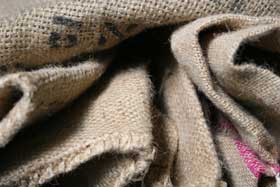 A taste characteristic of coffee stored too long in burlap (jute) bags, causing the coffee beans to acquire a straw-like coffee bag flavor. Also used to describe light roasted coffee with mildewy qualities. A taste characteristic of coffee stored too long in burlap (jute) bags, causing the coffee beans to acquire a straw-like coffee bag flavor. Also used to describe light roasted coffee with mildewy qualities. |
Baked Flat, dull, and uninteresting coffee. A baked flavor may be caused by roasting too slowly. Coffee roasted in a drum roaster for much more than about 17 minutes will likely be burnt or have a baked flavor. Flat, dull, and uninteresting coffee. A baked flavor may be caused by roasting too slowly. Coffee roasted in a drum roaster for much more than about 17 minutes will likely be burnt or have a baked flavor. |
Balance A balanced coffee may be complex, but does not have any overwhelming flavor or aroma characteristics. For example, Yemen Mocha is typically bold and flavorful, but is also well balanced. In contrast, Kenya AA, generally has a dominating wine-like fruity flavor. A well balanced coffee has flavors that can be sensed evenly across the tongue. Blending several different coffees together, if done correctly, can create a flavorful and balanced coffee. Balance, however, is not necessarily a positive taste attribute, since some people prefer coffees with particularly strong flavor distinctions. A balanced coffee may be complex, but does not have any overwhelming flavor or aroma characteristics. For example, Yemen Mocha is typically bold and flavorful, but is also well balanced. In contrast, Kenya AA, generally has a dominating wine-like fruity flavor. A well balanced coffee has flavors that can be sensed evenly across the tongue. Blending several different coffees together, if done correctly, can create a flavorful and balanced coffee. Balance, however, is not necessarily a positive taste attribute, since some people prefer coffees with particularly strong flavor distinctions. |
Bitter A harsh, generally unpleasant taste detected mostly in the back of the tongue. Bitterness is characteristic of over-extracted, defective, or extra dark roasted coffees. A harsh, generally unpleasant taste detected mostly in the back of the tongue. Bitterness is characteristic of over-extracted, defective, or extra dark roasted coffees. |
Body The physical mouth feel and texture of a coffee. Full bodied coffees have a strong, creamy, and pleasant, mouth feel. A coffees body (light, medium, or full) is its thickness due to the amount of dissolved and suspended solids and oils extracted from the coffee grounds, and may range from thin and watery to thick and creamy. The physical mouth feel and texture of a coffee. Full bodied coffees have a strong, creamy, and pleasant, mouth feel. A coffees body (light, medium, or full) is its thickness due to the amount of dissolved and suspended solids and oils extracted from the coffee grounds, and may range from thin and watery to thick and creamy. |
Bouquet The aroma of freshly ground coffee. The aroma of freshly ground coffee. |
Bready A bread-like, or grain-like, aroma. Insufficiently roasted, sour tasting, coffee will often have a bready aroma. Bready coffees may also be described as "green" or "beany". A bread-like, or grain-like, aroma. Insufficiently roasted, sour tasting, coffee will often have a bready aroma. Bready coffees may also be described as "green" or "beany". |
Bright Coffees with a pleasant, almost tangy, flavor. Bright coffees may also be described as having a wine like acidity. Coffees with a pleasant, almost tangy, flavor. Bright coffees may also be described as having a wine like acidity. |
Briny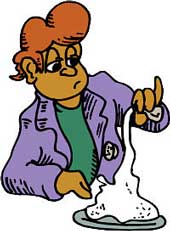 A salty taste often caused by continuously heating coffee after brewing is complete. Brewed coffee that sits on a burner overnight is likely to taste briny. A salty taste often caused by continuously heating coffee after brewing is complete. Brewed coffee that sits on a burner overnight is likely to taste briny. |
Caramelly A flavor and aroma characteristic of candy or syrup in which sugars have oxidized and become caramelized. Coffee beans contain sugars which caramelize during roasting and, if not burned, may be detected as caramelly notes in the cup. A flavor and aroma characteristic of candy or syrup in which sugars have oxidized and become caramelized. Coffee beans contain sugars which caramelize during roasting and, if not burned, may be detected as caramelly notes in the cup. |
Carbony The flavor and aroma characteristic of burnt food, or burnt wood. Carbony flavors and aromas are often used as an indication of roast degree when cupping darker roasted coffees. Also called "burnt" or "smoky". The flavor and aroma characteristic of burnt food, or burnt wood. Carbony flavors and aromas are often used as an indication of roast degree when cupping darker roasted coffees. Also called "burnt" or "smoky". |
Chicory An herb used as a coffee substitute and to flavor coffee. Chicory, or Cichorium Intybus, has been used as a coffee additive for centuries, both to enhance flavor of coffee and to stretch coffee supplies. In New Orleans, Louisiana, many have developed a preference for chicory coffee. An herb used as a coffee substitute and to flavor coffee. Chicory, or Cichorium Intybus, has been used as a coffee additive for centuries, both to enhance flavor of coffee and to stretch coffee supplies. In New Orleans, Louisiana, many have developed a preference for chicory coffee. |
Chocolatey The taste or aroma of chocolate. Coffees rarely have a very strong chocolatey flavor or aroma, but some Central American and Yemeni coffees have a distinct chocolatey aroma and a slightly bitter-sweet chocolatey taste. The taste or aroma of chocolate. Coffees rarely have a very strong chocolatey flavor or aroma, but some Central American and Yemeni coffees have a distinct chocolatey aroma and a slightly bitter-sweet chocolatey taste. |
Citrus The aroma and taste of ripe citrus fruit. Citrus notes are often found in coffee, which is not surprising considering the fact that coffee beans are the seeds of coffee cherries. Coffees with flavor characteristics of unripe citrus are described as "sour". The aroma and taste of ripe citrus fruit. Citrus notes are often found in coffee, which is not surprising considering the fact that coffee beans are the seeds of coffee cherries. Coffees with flavor characteristics of unripe citrus are described as "sour". |
Clean Flavorful, but without any pungent or unusual flavors. Flavorful, but without any pungent or unusual flavors. |
Complexity The array of flavors and flavor shifts experienced when smelling and tasting a coffee. While not necessarily a positive attribute, complexity can sometimes be gained by blending one coffee with another or by blending a dark roast with a light roast. Some excellent single origin coffees are by themselves both complex and balanced, but agreeable complex flavors are most often achieved by blending two or more complimentary single origin coffees. The array of flavors and flavor shifts experienced when smelling and tasting a coffee. While not necessarily a positive attribute, complexity can sometimes be gained by blending one coffee with another or by blending a dark roast with a light roast. Some excellent single origin coffees are by themselves both complex and balanced, but agreeable complex flavors are most often achieved by blending two or more complimentary single origin coffees. |
Crust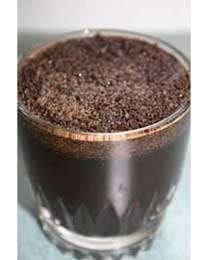 The layer of saturated coffee grounds that floats to the surface when cupping (tasting) coffee. As part of the traditional coffee cupping method, called "breaking the crust", the grounds are agitated to release trapped vapors allowing the cupper note the coffees unique characteristics. The crust is then scooped out with a spoon before tasting the brewed coffee. The layer of saturated coffee grounds that floats to the surface when cupping (tasting) coffee. As part of the traditional coffee cupping method, called "breaking the crust", the grounds are agitated to release trapped vapors allowing the cupper note the coffees unique characteristics. The crust is then scooped out with a spoon before tasting the brewed coffee. |
Earthy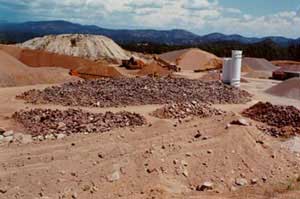 The aroma characteristic of fresh earth, wet soil, or raw potatoes. While not necessarily negative characteristic, earthiness may be caused by molds during the processing of harvested coffee cherries. Earthy notes, for example, are commonly found in semi-dry processed coffees from Indonesia. The aroma characteristic of fresh earth, wet soil, or raw potatoes. While not necessarily negative characteristic, earthiness may be caused by molds during the processing of harvested coffee cherries. Earthy notes, for example, are commonly found in semi-dry processed coffees from Indonesia. |
FermentA sour and oniony taste characteristic of over-fermented coffee. After de-pulping coffee cherries, which removes the skin and some attached mucilage (pulp), the separated beans will still have a significant amount of pulp attached. The remaining pulp is often loosened by fermentation, allowing it to be washed away prior to drying. If fermentation is not stopped as soon as the remaining parchment (husk) is no longer slimy, and has a rough texture, the coffee may acquire a ferment flavor. |
FlatLacking flavor and aroma. |
Floral The scent of flowers including honeysuckle, jasmine, dandelion and nettles. Mildly floral aromas are found in some coffees and are generally perceived along with fruity or herbal notes. The scent of flowers including honeysuckle, jasmine, dandelion and nettles. Mildly floral aromas are found in some coffees and are generally perceived along with fruity or herbal notes. |
Fruity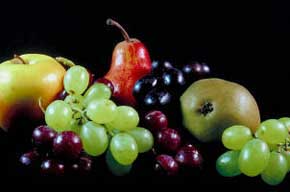 The aroma and taste of fruit. Many coffees have fruity notes, which is not surprising considering that coffee beans are seeds of a fruit (coffee cherries). A coffees acidity, or wine-like brightness, is often related to fruit, or citrus. Professional cuppers are careful to not use the term "fruity" when describing the aroma of unripe, or over-ripe, fruit. The aroma and taste of fruit. Many coffees have fruity notes, which is not surprising considering that coffee beans are seeds of a fruit (coffee cherries). A coffees acidity, or wine-like brightness, is often related to fruit, or citrus. Professional cuppers are careful to not use the term "fruity" when describing the aroma of unripe, or over-ripe, fruit. |
Grassy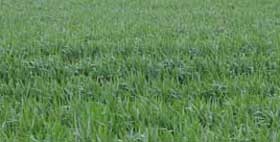 Aroma associated with freshly mowed green grass, herbs, green foliage, green beans, and unripe fruit. A grassy aroma, also called green, herby, or herbal, is characteristic of sour tasting under-roasted coffee beans and under-dried or water damaged coffee beans. Aroma associated with freshly mowed green grass, herbs, green foliage, green beans, and unripe fruit. A grassy aroma, also called green, herby, or herbal, is characteristic of sour tasting under-roasted coffee beans and under-dried or water damaged coffee beans. |
HarshPungent and disagreeable, such as a low quality bitter Robusta. |
Herbal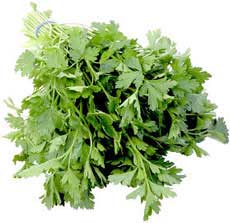 An aroma associated with freshly mowed lawn, green grass, herbs, green foliage, green beans, and unripe fruit. Herbal characteristics are typical of coffees not fully dried to the usual 10% to 12% moisture content during processing. An herbal aroma is also called green, grassy, or herby. An aroma associated with freshly mowed lawn, green grass, herbs, green foliage, green beans, and unripe fruit. Herbal characteristics are typical of coffees not fully dried to the usual 10% to 12% moisture content during processing. An herbal aroma is also called green, grassy, or herby. |
Hidey The smell or taste of hide (leather). Hidey notes, for example, may be found in some east African coffees. The smell or taste of hide (leather). Hidey notes, for example, may be found in some east African coffees. |
Instant taste A taste characteristic of freeze dried instant coffee. Many find the taste of instant coffee objectionable. Ironically, instant coffee is commonly served in Colombia and Brazil, both large volume coffee exporters. A taste characteristic of freeze dried instant coffee. Many find the taste of instant coffee objectionable. Ironically, instant coffee is commonly served in Colombia and Brazil, both large volume coffee exporters. |
Malty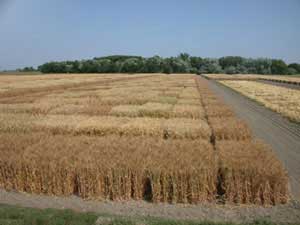 The aroma of malt. Often used together with Cereal and Toast-like to include the aroma of cereal, malt, and toast. "Cereal", "Malty", and "Toast-like" describe grain-like aromas and flavors of roasted grain (including roasted corn, barley, or wheat), malt extract, freshly baked bread, or toast. The aroma of malt. Often used together with Cereal and Toast-like to include the aroma of cereal, malt, and toast. "Cereal", "Malty", and "Toast-like" describe grain-like aromas and flavors of roasted grain (including roasted corn, barley, or wheat), malt extract, freshly baked bread, or toast. |
Medicinal The smell of medicine, or iodine. A medicinal flavor with notes of iodine which can result from cherries drying while still on the coffee plant. Medicinal flavors cannot be hidden well by blending. The smell of medicine, or iodine. A medicinal flavor with notes of iodine which can result from cherries drying while still on the coffee plant. Medicinal flavors cannot be hidden well by blending. |
Mellow Balanced and mild, without strong tastes or aftertaste. Medium roasted, low grown (less than 4000 feet) Arabicas, for example, generally have a mellow flavor. Balanced and mild, without strong tastes or aftertaste. Medium roasted, low grown (less than 4000 feet) Arabicas, for example, generally have a mellow flavor. |
NeutralNeutral coffees do not have a predominant taste sensation, but may still have a pungency felt by the tongue and are often used in blending. Coffees from Brazil and Colombia, for example, commonly have a neutral flavor. |
Nose The aroma and taste characteristic of a coffee sensed by the nose, especially when exhaling coffee vapors after swallowing. The aroma and taste characteristic of a coffee sensed by the nose, especially when exhaling coffee vapors after swallowing. |
Nutty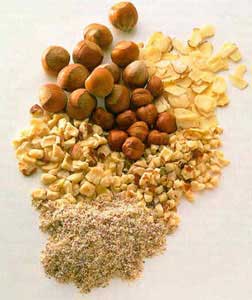 The aroma and flavor characteristic of fresh nuts. Coffee cuppers are careful to avoid using the term "nutty" when describing coffee with taste or aroma characteristics of rancid nuts or bitter almonds. Coffees from South America commonly have a nutty flavor. The aroma and flavor characteristic of fresh nuts. Coffee cuppers are careful to avoid using the term "nutty" when describing coffee with taste or aroma characteristics of rancid nuts or bitter almonds. Coffees from South America commonly have a nutty flavor. |
Oniony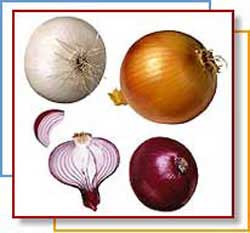 Flavor characteristic of onions, and often associated with the use stagnant water when processing coffee by the wet method. Oniony characteristics are often avoided by recycling the pulping water during processing. Flavor characteristic of onions, and often associated with the use stagnant water when processing coffee by the wet method. Oniony characteristics are often avoided by recycling the pulping water during processing. |
Papery A taste characteristic of coffee stored in paper bags or prepared using low quality filter paper. A taste characteristic of coffee stored in paper bags or prepared using low quality filter paper. |
Past Crop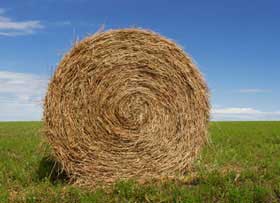 Coffee from a previous years harvest. Past crop, old crop, old, or oldish are also used as a taste terms to describe coffees stored for more than a year. Past crop coffees tend to have a woody, strawy, or hay-like flavor and less acidity. Coffee from a previous years harvest. Past crop, old crop, old, or oldish are also used as a taste terms to describe coffees stored for more than a year. Past crop coffees tend to have a woody, strawy, or hay-like flavor and less acidity. |
PeasyAn unpleasant bitter taste similar to fresh green peas. |
Primary tastes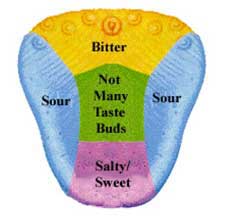 Professional coffee cuppers may describe flavors detected by the tongue (primary tastes), and flavors detected through the nose (secondary tastes). Primary tastes are salty, sweet, sour, and bitter. Taste buds are located on our tongues, and while many subtle tastes can be recognized, there are only four distinct tastes (salty, sweet, sour, and bitter). Each taste bud contains between 50 and 100 taste cells, and each taste cell has receptors. While receptors are capable of recognizing all tastes, some tend to recognize sour foods and are usually located around the sides of the tongue. Sweet and salty foods are usually tasted best near the end of the tongue. Bitter foods are usually tasted at the back of the tongue. The middle of the tongue usually has no taste buds. Professional coffee cuppers may describe flavors detected by the tongue (primary tastes), and flavors detected through the nose (secondary tastes). Primary tastes are salty, sweet, sour, and bitter. Taste buds are located on our tongues, and while many subtle tastes can be recognized, there are only four distinct tastes (salty, sweet, sour, and bitter). Each taste bud contains between 50 and 100 taste cells, and each taste cell has receptors. While receptors are capable of recognizing all tastes, some tend to recognize sour foods and are usually located around the sides of the tongue. Sweet and salty foods are usually tasted best near the end of the tongue. Bitter foods are usually tasted at the back of the tongue. The middle of the tongue usually has no taste buds. |
QuakeryA peanut-like flavor that results from processing unripe or underdeveloped coffee beans. |
Rancid The terms "rancid" and "rotten" are used to describe characteristics of decomposing coffee. Professional coffee cuppers are careful to not describe a strong and unpleasant aroma as "rancid", if there are no other signs of deterioration. The terms "rancid" and "rotten" are used to describe characteristics of decomposing coffee. Professional coffee cuppers are careful to not describe a strong and unpleasant aroma as "rancid", if there are no other signs of deterioration. |
Rubbery The aroma and flavor characteristic of hot tires or rubber bands. A rubbery characteristic, while not always negative, is highly recognizable in some coffees, especially fresh Robustas. The aroma and flavor characteristic of hot tires or rubber bands. A rubbery characteristic, while not always negative, is highly recognizable in some coffees, especially fresh Robustas. |
ScorchedRoasted coffee with burn marks caused by inadequate tumbling or by roasting too hot. Also called "tipped" or "charred". Scorched beans may look completely roasted, but are likely to have soury and bready flavors. |
SmoothA taste characteristic of balanced coffee without any pronounced tastes or aftertastes. Also called round, rounded or soft. |
Sour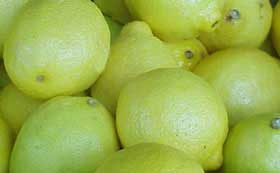 An excessively sharp, biting and unpleasant flavor (such as vinegar or acetic acid). Sour or soury flavors are sometimes associated with the aroma of fermented coffee. A sour taste can be caused by overripe or already fermenting cherries, or by improper fermentation where yeasts and alcohol form vinegar-like acids To avoid this defect, coffee still in its parchment (husk) is washed immediately after fermentation when the parchment coffee is no longer slimy and has a rough texture. Soury flavors are often confused with acidity, which is the slightly tangy sensation associated with bright coffee flavors. An excessively sharp, biting and unpleasant flavor (such as vinegar or acetic acid). Sour or soury flavors are sometimes associated with the aroma of fermented coffee. A sour taste can be caused by overripe or already fermenting cherries, or by improper fermentation where yeasts and alcohol form vinegar-like acids To avoid this defect, coffee still in its parchment (husk) is washed immediately after fermentation when the parchment coffee is no longer slimy and has a rough texture. Soury flavors are often confused with acidity, which is the slightly tangy sensation associated with bright coffee flavors. |
Spicey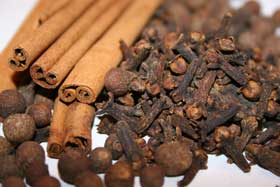 The aroma of sweet spices such as cloves, cinnamon, and allspice. The term "spicy" when describing coffee does not include the aroma of savory spices such as pepper, oregano, and curry. The aroma of sweet spices such as cloves, cinnamon, and allspice. The term "spicy" when describing coffee does not include the aroma of savory spices such as pepper, oregano, and curry. |
TaintAn unexpected off-flavor not clearly defined by usual taste categories. Too much pulp in fermenting parchment, for example, will produce tainted coffee. |
Tobacco The aroma and flavor of fresh tobacco in brewed coffee. A tobacco-like taste is not necessarily disagreeable and is found in various specialty coffees throughout the world. A tobaccoy taste or aroma should not be confused with characteristics of burnt tobacco (ash). The aroma and flavor of fresh tobacco in brewed coffee. A tobacco-like taste is not necessarily disagreeable and is found in various specialty coffees throughout the world. A tobaccoy taste or aroma should not be confused with characteristics of burnt tobacco (ash). |
Winey The combined sensation of smell, taste ,and mouth feel experienced when drinking wine. A winey taste is generally perceived along with acidy and fruity notes. Often used incorrectly to describe a soury or over-fermented flavor. The combined sensation of smell, taste ,and mouth feel experienced when drinking wine. A winey taste is generally perceived along with acidy and fruity notes. Often used incorrectly to describe a soury or over-fermented flavor. |
Woody A taste characteristic of old coffee. Woody coffee has a smell of dry wood, an oak barrel, dead wood, or cardboard. This defect results when beans are improperly stored for an extended period of time. Coffees stored at low altitudes in high temperatures and humidity (as in many ports of shipment) tend to deteriorate quickly and become woody. All coffees can become woody if stored long enough. A taste characteristic of old coffee. Woody coffee has a smell of dry wood, an oak barrel, dead wood, or cardboard. This defect results when beans are improperly stored for an extended period of time. Coffees stored at low altitudes in high temperatures and humidity (as in many ports of shipment) tend to deteriorate quickly and become woody. All coffees can become woody if stored long enough. |




Tidak ada komentar:
Posting Komentar